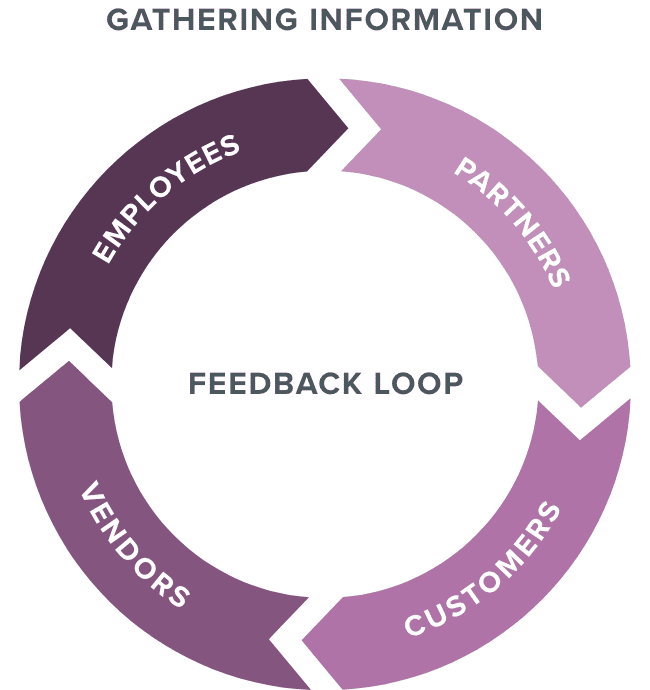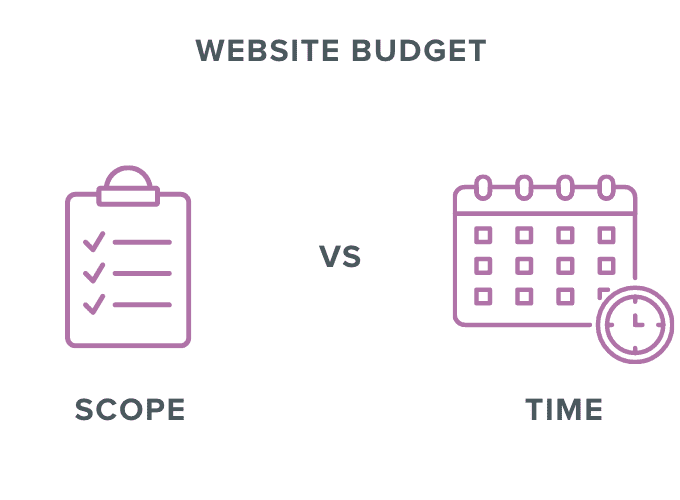If you’ve recently been hired in a marketing leadership position at your company, you’ve earned every congratulations that’s come your way. It’s a big step in your career and a chance to do great things. Now, for better or worse, you actually have to do them to keep your company — and your career — moving forward.
Obviously, you know what you’re doing or you wouldn’t be in this position. But when a B2B names a new CMO or marketing head, it’s likely because it needs a change in direction. And your company’s future depends on your ability to deliver.
Maybe growth has stalled and your company is making a shift in its positioning. Or maybe your brand is no longer connecting with internal or external audiences in an ever-competitive marketplace, and you have to make a change to stand out. Whatever the reason, your first big test as CMO will be navigating a successful rebrand, which includes an updated website. No pressure, right?
Planning a rebrand can be overwhelming, especially when it feels like the biggest KPI for your new position. But don’t worry. Follow these 7 steps and you’ll ensure your company is headed in the right direction.
1. Expose the Past to See the Future
Before you can begin to express who your B2B is now, you need to know who it was in the past. Start by examining the full picture of your company’s brand identity. Understanding past product launches and their results will illustrate the history of your brand and what has and hasn’t worked.

Once you identify your company’s prior initiatives, you can consider whether to try something again in the same market. Or, if a move has never been done, you can decide your organization needs to do something different. Ensuring a rebranding initiative remains connected with your company’s history builds trust in your brand with the customers you have and the audience you hope to attract.
Your company’s founding values and original vision form the building blocks of your brand’s story. As you recognize where your brand has been through its successes and failures, you’ll be better prepared to plot where to go next.
2. Create a Feedback Loop
Coming into your leadership position, you researched your company’s position in the marketplace and formed your own impressions of what to do next. Now, you need to gather as much information as possible from those who know your business: Your coworkers, customers, business partners, and vendors.

Internal and external voices are great resources for understanding how to NPS survey results, one-on-one stakeholder meetings, and customer feedback reports are just a few ways to gather insights about your company and its services. Any products or offerings that are performing exceptionally well can be used to inform your branding efforts. At the same time, any underperforming areas should be addressed or de-emphasized going forward.
move your business into its next chapter. However, whatever processes you adopt to gather information should remain in place after your
rebranding. Feedback provides a valuable resource to inform your marketing no matter the initiative.
3. Identify Key Brand Performance Metrics
Before you can lead your B2B company through a rebranding effort, you have to establish a viable baseline to compare against any upcoming changes. Recognizing your brand’s current effectiveness will underscore how much work lies ahead. Then, once the rebranding effort is over, you can compare results against those KPI benchmarks.
Website engagement, traffic, and search metrics illustrate how well your company and its content are performing. Do your prospects primarily search for your brand name? Or does the name of one of your solutions drive more interest? Social media mentions, NPS numbers, and share of voice offer more indicators of your brand’s visibility among customers.
4. Know the Scope of Your Rebrand and Its Strategy
Does your company’s brand need a slight refresh or a complete reinvention? While the right web agency will have some expertise in evaluating your position in the marketplace, you and your stakeholders ultimately know your company best.

That said, you can help any web agency you work with by gaining a sense of what elements are underperforming and which will make a difference for your brand. Do you need new messaging along with an updated website? How strong is your messaging strategy? What market research has your company already done? You should evaluate any gaps in buyer personas as well as your brand’s mission and values statements to ensure its identity still makes sense.
Conduct a visual brand audit to create an inventory of assets across every digital channel. Determining the parts of your company’s identity that need work and what needs to be scrapped develops the scope of any rebranding project. With those pieces in place, the next stage of your company grows clearer
5. Conduct a Competitive Audit to Secure Your Position
Competitive analysis is crucial for any rebranding effort. You may already have a vision for your company’s digital presentation. But no B2B exists in a vacuum. You need to examine how your brand looks in relation to your competitors to effectively determine your next moves.

How the other B2B companies in your market present themselves inform your branding priorities. Are your visual elements distinct enough from direct competitors? Or is your company entering a new vertical that would be strengthened by visual cues that adhere to industry norms?
Planning for the areas where your company should stand apart from or align with its competition will ensure a more impactful rebrand.
6. Set a Realistic Budget for Your New Website
According to a recent report, your company’s brand accounts for 20% of its market value. But as you’re planning how much to spend on your project, you also need to budget the amount of time required for its completion.
Too often, a company will spend its rebranding budget on getting its visual and verbal communication just right. Then, when it comes time to execute those details and create a strong website, you’re left with neither enough time nor money to build it properly.

Your website is the most important touchpoint between your brand and its audience. You can’t afford to undercut all your strategic efforts toward a rebranding with a website that doesn’t look its best or simply doesn’t work. That said, successful websites take time to produce. You need to plan accordingly to ensure your company offers a strong first impression when it’s time to launch.
7. Hire the Right Digital Agency
Any sustainable rebranding initiative requires a strategic framework that accounts for where your company is now and where it needs to go. As CMO, it’s easy to feel overwhelmed and under pressure up to the moment you find expert help that’s right for your needs. The right agency will understand the nuances of your business and allow you to lead your company to a bright future.
The right agency will understand the nuances of your business and allow you to lead your company to a bright future.
However, in the fast-paced world of B2B tech companies, not every agency is created equal. At Clear Digital, we’ve spent many years creating and studying brand strategies in an exceptionally competitive and dynamic landscape. We understand the distinctive sales cycles, persona types, and digital needs that set companies like yours apart.
If this sounds like the kind of experience you need as you oversee this critical and complex process for your company, we should talk. We’ll get started on making sure your rebranding initiative makes the kind of impact your business needs.






